“Dark Winds” Showrunner John Wirth on Building a Peabody-Winning Thriller with Native Voices at its Core
Robert Redford, back in 1988, became so obsessed with the late Tony Hillerman’s Leaphorn & Chee novels about Native American cops that he later teamed with Game of Thrones author George R.R. Martin, a New Mexico resident, to champion adaptations of the stories. Three years ago, AMC+ + came on board and launched Dark Winds. The show, set in the early seventies, follows tribal cops Joe Leaphorn (Zahn McClarnon), Jim Chee (Kiowa Gordon), and Bernadette Manuelito (Jessica Matten) as they solve crimes on their Navajo Nation turf.
Season 3, which concluded Sunday, April 28, co-stars A Martinez, Jenna Elfman, and Christopher Heyerdahl and follows cases that encompass human trafficking at the border, ketamine-fueled head trips, and corrupt archaeologists. The Peabody Award-winning series, filmed entirely in New Mexico, has already begun work on a new slate of episodes.
Dark Winds showrunner John Wirth, whose resume includes network classics Remington Steele and Nash Bridges, checks in from the series’ writers’ room to unpack how he and his team have built one of TV’s most consistently compelling crime dramas.
Can you describe the Dark Winds writers’ room?
We have six writers, four of whom are native. We also have two Navajo consultants who are in the room all the time, so we are telling a detective story, but we run everything through the Native lens.
In the past, Native Americans have rarely enjoyed that level of participation within the TV industry. Are you aiming to make the stories more authentic?
There’s a sense in Indian country that White people have been appropriating their stories for years. To the extent that anyone feels that way about the Tony Hillerman novels, I would just say that it’s important to honor the source material to a degree, but it’s also important to re-appropriate these stories through the eyes of our Navajo characters. Having Indigenous writers in the room really helps us do that.
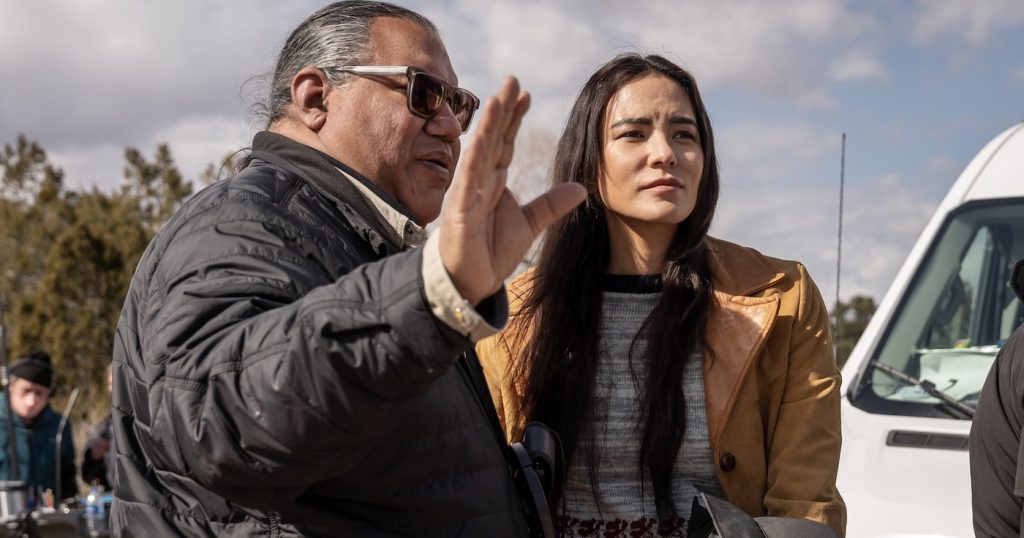
Can you give an example?
We were talking about the relationship between Chee and Bernadette, and I went on a whole spree about when I was a younger guy and had a girlfriend and how things worked in that situation. One of our female native writers said, “Well, that’s a good story, but that’s not the way it works in Navajo Nation, which is a matrilineal society. Men and women have different attitudes from people in the White world.” So, that was a case in which my experience as a human being was valid but not quite appropriate for the story we were trying to tell about these two native Navajo characters.
From the start, Dark Winds has explored White justice versus “Indian justice.” How does that framework affect the plot lines?
Our characters are really straddling two worlds. Some Natives call the White world the Over World, so our law enforcement officers are upholding the White man’s law, but since they’re on the Navajo reservation, there’s also Navajo justice. The trick for us is to make the show feel like a cop show but still ground our characters in all things Navajo. As they interact with suspects, relatives of crime victims, and so forth, all of that comes from a Navajo perspective.
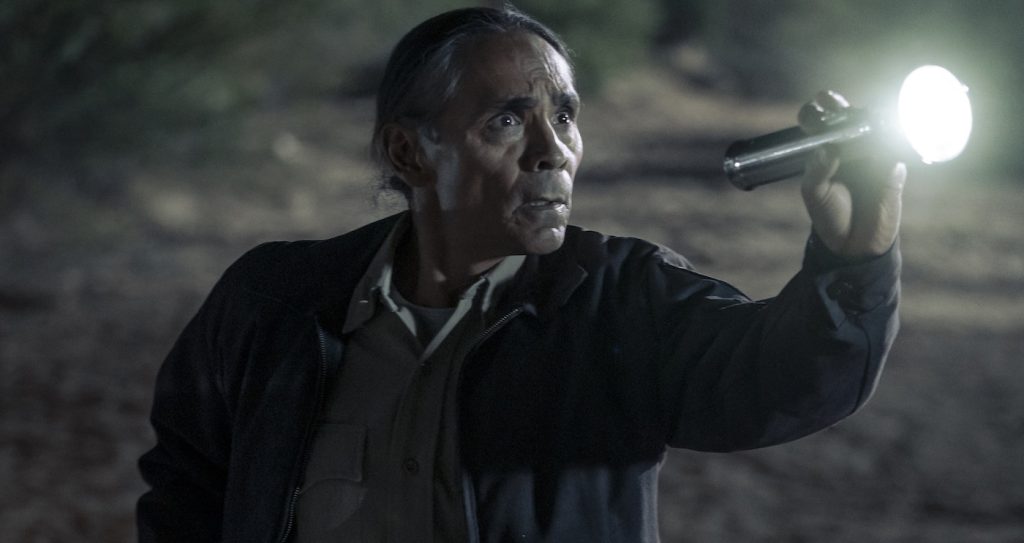
SPOILER ALERT
This season, a White archaeologist becomes a suspect in the disappearance of two Navajo boys. How does that case play into the White/Native conflict?
Going back to Season 2, B.J. Vines engineered the death of [Navajo] workers at his well to further his scheme to mine uranium, and one of those workers was Joe Leaphorn’s son. B.J. Vines says to his face, “They’re just six dead Indians. What does it matter?” Same thing here.
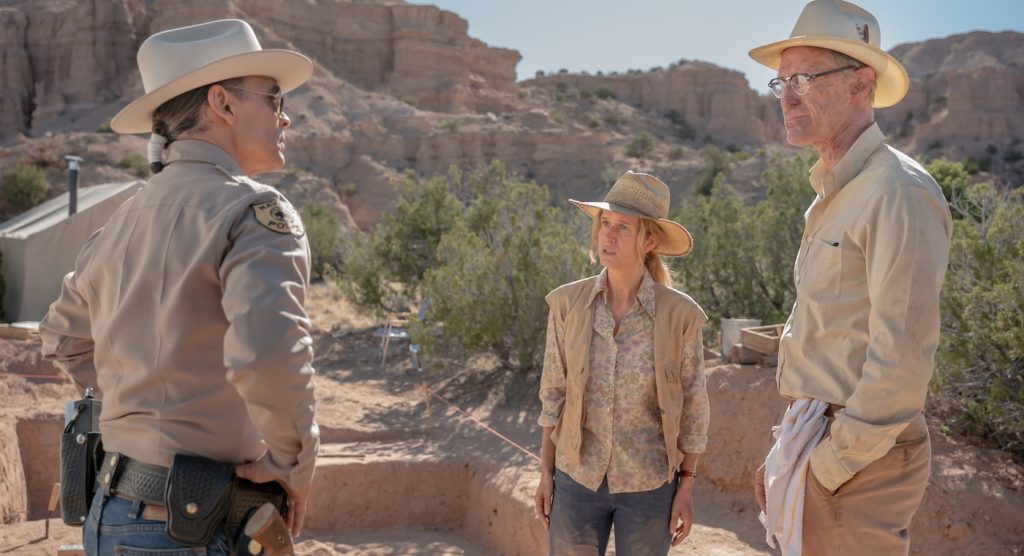
It’s a real gut punch when Leaphorn finds a dead boy in the desert with an arrowhead in his mouth, which ultimately connects to an arrogant archaeologist.
I love archaeology and I read Archaeology Magazine, but the truth is, in our show, archaeologists are intruders and interlopers who go into a land, dig up, and, in many cases, take away artifacts and sacred objects that belong to the culture.
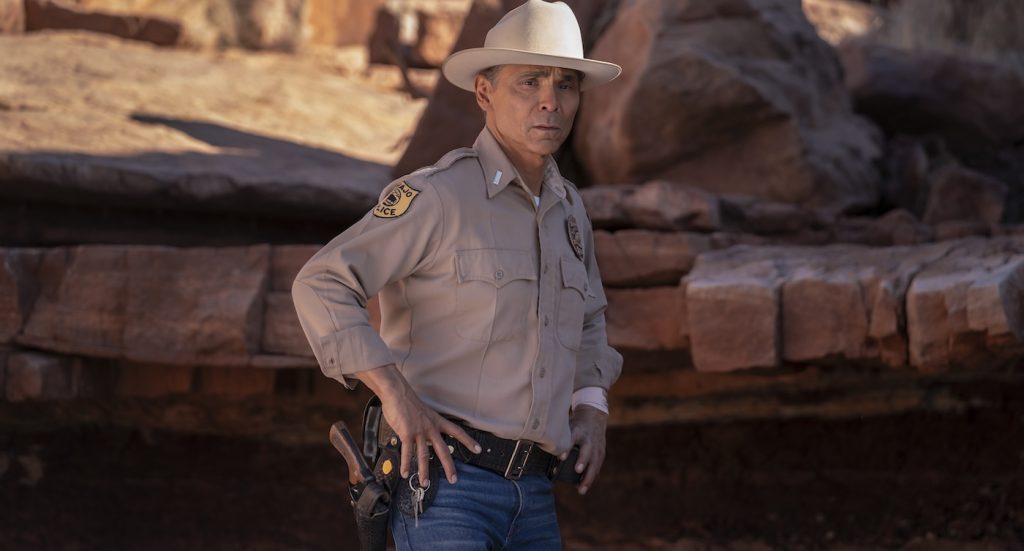
The show takes place in the early 1970s, but aside from the old cars and the absence of smartphones and computers, the stories feel quite contemporary. Bernadette, for example, investigates smuggling at the Mexican border.
The more things change, the more they stay the same, as we go back in history and develop stories based on things that actually happened. In Dark Winds, we have a chance to do episodes about what’s going on today through our characters, and that gives the show some of its power, I think. It’s not just a cop show with a plot.
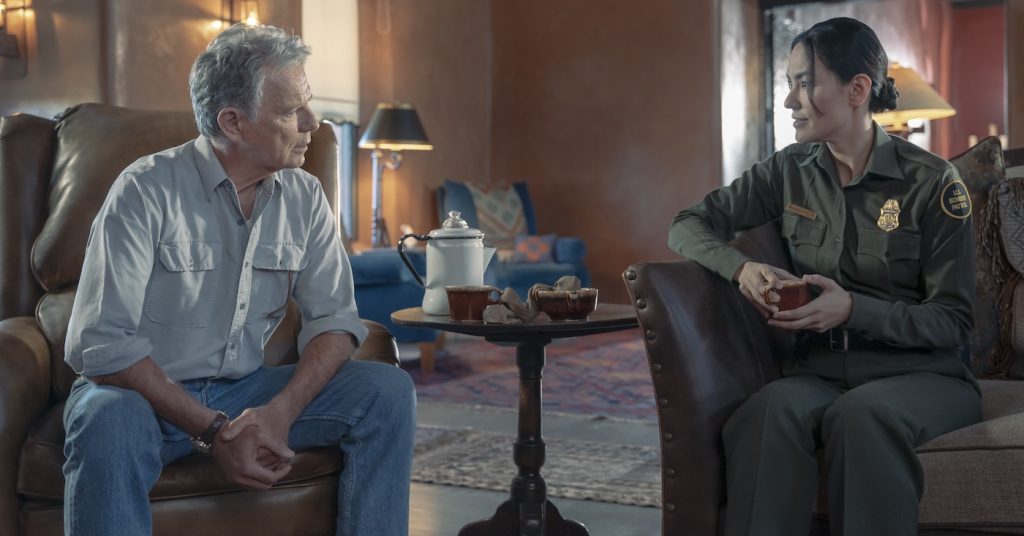
Before Dark Winds, you worked on network shows when TV production was centered in California. Were you conscious of the industry’s impact on the local economy then?
I’ve been involved in television for 43 years now, and at least half of that time was in Los Angeles. We didn’t really think back then about what kind of impact our shows had on the economy. But now we’re seeing the city [of Los Angeles] in debt, and a large part of that is because the entertainment industry is going away.
You later worked outside of California in Atlanta, New York, and Canada. What was that like?
I remember running a show in Alberta, Canada, and I always had trouble getting across the border. The immigration officers would take me into the backroom, and one time, this guy was really messing with me. Then his supervisor came in, looked at my passport, and realized I was the showrunner for Hell on Wheels. He turned to the guy and said, “Do you have any idea how much money this man is responsible for bringing into the city? Let him in!”
Does Dark Winds have a similar impact on Santa Fe?
We’ve been shooting there consistently for four years, and it’s a big deal. We hire a lot of people there. Our cast and crew who travel to Santa Fe stay in hotels and rent cars, go out to restaurants, and buy things in stores. All of that has a big impact on the community.
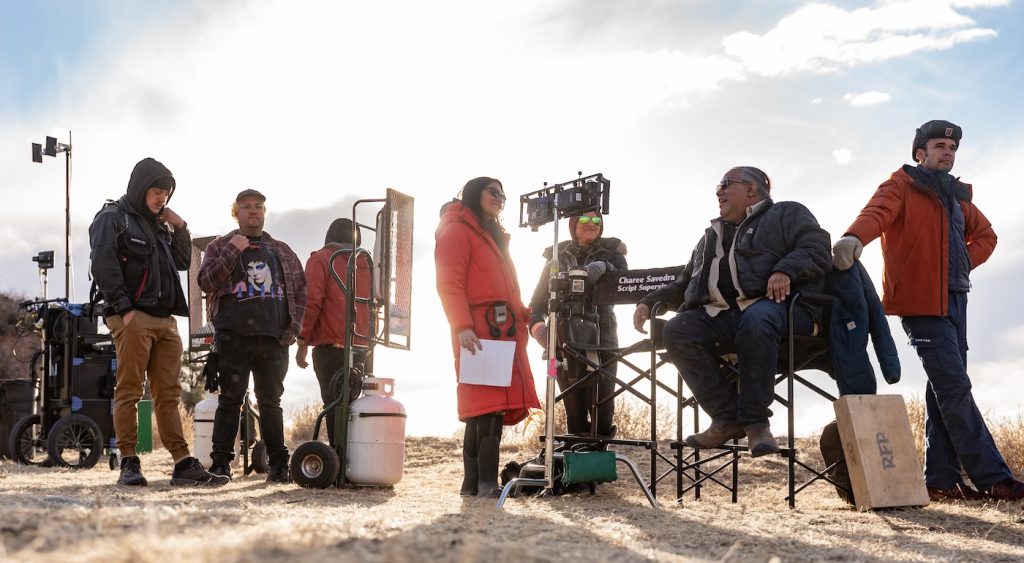
Do you feel like you’re getting your money’s worth in terms of locations?
Oh yeah. It’s like you set the camera down, and any way you look is a beautiful vista. We shoot a lot of stuff on our own studio backlot, about 15 acres, and we do travel out to the Navajo Nation to shoot some stuff, too. The scenery is spectacular, the sky is amazing, the light is amazing, the ground, the desert, the flora and fauna. For the fourth season, we’re capturing some beautiful wind events. It’s a whole world, and there’s no other show on TV that gives you the Navajo Nation. It’s very scenic.
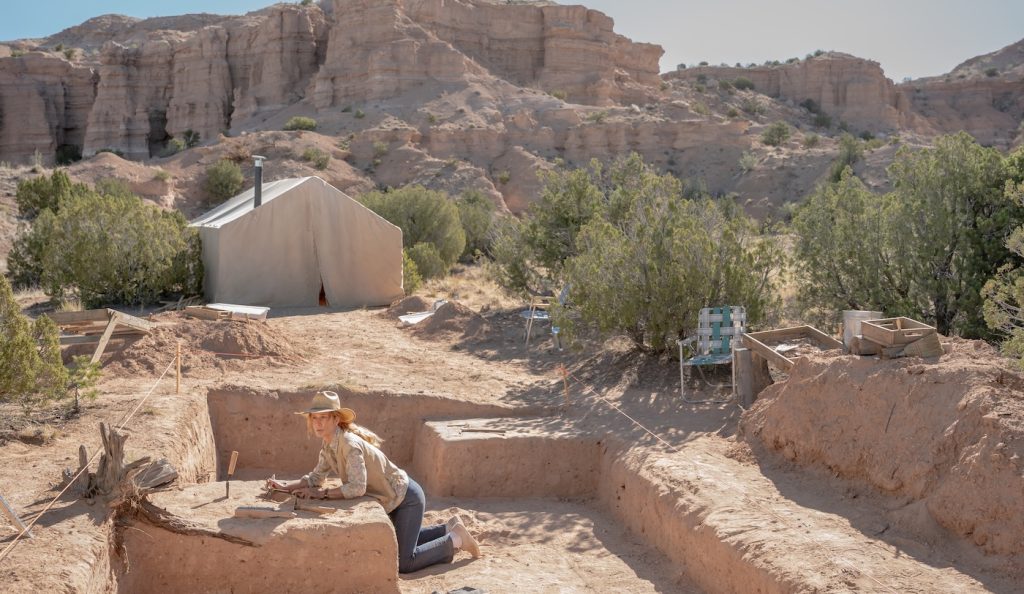
Where is your base of operations for Dark Winds?
Near Santa Fe, we’re in an old casino building [Camel Rock Studios]. The Tesuque Pueblo reservation built a fancier, more modern casino a mile and a half from this place. It’s not really built to make movies, but we’ve adapted it, so we’re doing fine there.
You have worked on series like Nash Bridges, Remington Steele, and Terminator: The Sarah Connor Chronicles in the past. What’s the biggest difference between those shows and Dark Winds?
We make eight episodes of Dark Winds in the same amount of time that we used to make 22 or 26 episodes. We spend so much more time developing each script in the writer’s room, and then making it with the crew and the actors, and then more time in post-production. I worked on some network shows for five, six seasons. When I come across them on TV, I’ll think, “This must have been before my time,” then the credits come up and it says “Written by John Wirth.” Oh my God, I have no memory of this thing at all, just because we were moving so fast trying to get episodes out the door.
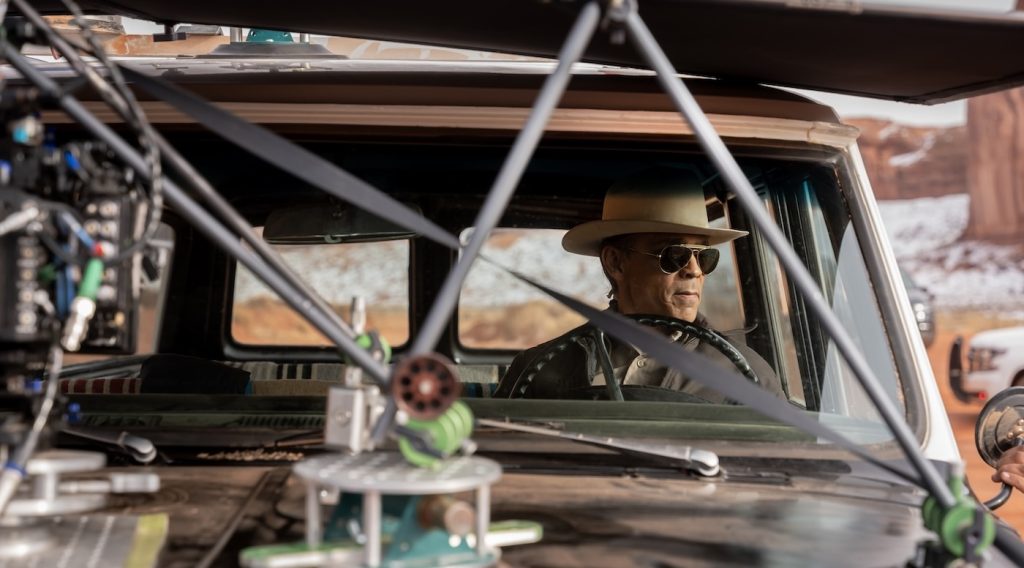
Does the Dark Winds production schedule give you more room to breathe compared to old-school network series?
Yeah, we get to live with each episode longer, which is both more pleasurable and also a more torturous experience because these stories are very hard to figure out. We’re walking the line between the White world, the Native world, White justice, and Indian justice, with all the human frailties and excesses and joys and pleasures to deal with. And then there’s the Navajo overlay, so it can get pretty complicated.
Featured image: BTS, Zahn McClarnon as Joe Leaphorn – Dark Winds _ Season 2, Episode 6 – Photo Credit: Michael Moriatis/AMC

